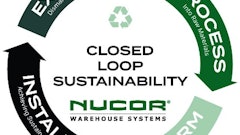Scottsdale, AZ — April 21, 2011 — The recent natural and nuclear disasters in Japan have resulted in stories of unthinkable devastation and human loss. Because of that country's position as a global center of commerce and trade, it has also provided perhaps the most sweeping example of supply chain upheaval.
This is the latest in a line of headline-making disruptions that only seems to grow — the economic downturn of 2008-2009, continuing unrest in the Middle East, international terrorism, hurricanes, oil spills, port strikes, and product recalls. These unpredictable challenges are establishing new mandates for supply chain professionals globally.
Consider Risk at All Levels
"While it is impossible to foresee every natural disaster, act of terrorism or other supply chain contingency, a consideration of such disruptions must be part of the foundational strategic planning process from manufacturing all the way to the store shelf," said Kelly Thomas, senior vice president for manufacturing at JDA Software. "Predefining the right set of response levers to be activated in the event of supply chain disruption helps prepare businesses to manage supply chain contingencies based on long-term strategic priorities instead of scrambling to make hasty, ill-informed decisions when the unpredictable occurs."
Because supply chain disruption is a reality — for both the 200-mile local and 10,000-mile global supply chain — JDA offered the following risk-mitigation guidelines for both manufacturers and retailers:
» Undergo a systematic analysis of the total landed cost related to a variety of procurement strategies in order to realistically assess the potential value delivered by a global supply network and make informed decisions regarding risk versus reward. It is important to make this assessment an ongoing process, allowing for frequent plan updates as political conditions, fuel prices, tariffs, currency exchange rates, labor costs and other factors change.
» Create contingency plans through detailed business simulations and what-if scenario analysis. Risk exposure can be minimized by creating backup production and distribution plans that include second- and third-tier materials sources, component vendors, substitute parts and transportation carriers. Having prioritized allocation plans allows for scarce inventory to be allocated in the manner that makes the best strategic sense. Having ready knowledge of alternate supply sources and establishing substitution strategies in advance can help ensure that product remains on the store shelf, even in the most challenging environments.
» Ensure that contingency rules and policies in place at the strategic level also exist at the operations or tactical level. Running what-if scenarios in advance at the tactical level can help companies operate through short-term supply contingencies without significant interruption or a long-term business impact.
» Monitor daily operating conditions on an ongoing basis so that demand spikes, local weather events, labor strikes and other short-term performance threats can be anticipated and managed as effectively as possible. Since variability is a given at the operational level, it is crucial to maintain a robust, ongoing Plan-Do-Check-Act (PDCA) cycle that continuously monitors and corrects any mismatch between supply and demand. A continuous PDCA process can address minor issues before they become major supply chain disruptions by keeping planned and actual results as close as possible.
» Monitor supply chain activity when disaster strikes to quickly adapt preplanned promotional and marketing campaigns as product availability changes. Campaigns may need to be suspended or substitution strategies initiated to ensure that customer needs are met and that both retailer and manufacturer can make good on their promotional promises.
» Collaborate to achieve greater visibility from manufacturing to the store shelf. Collaboration between manufacturers and retailers must include trust and transparency to ensure disruptions are met with more agile and effective responses. Building these relationships now helps ensure that business plans are aligned and all parties are better positioned to respond quickly with a goal of keeping products on the shelf in even the most difficult circumstances.
"The retailer that engages in a relationship based on trust and transparency around cross-enterprise strategies and business planning will be in a much better position to secure constrained supply product from a vendor," said Jane Fazzalari, vice president for retail industry strategy with JDA.
While no manufacturer or retailer can foresee every emergency, it is critical to remember that when performance is disrupted by a major event like a hurricane, or even a minor issue at just one supplier, long-term success lies in being prepared for any deviation — and responding both quickly and decisively.
Whether a supply chain spans 200 miles or 10,000 miles, by identifying and managing risk, companies can position themselves to manage through the chaos to protect revenue, profit and market share in the event of supply chain disruption.
Related Links
Related Webcast Event
- Aftershocks in the Supply Chain — How to respond to crisis, assess global scenarios, and mitigate risk
Related Article
- Risk in the Electronics Value Chain — A V-shaped recovery has companies scrambling and in need of strategies to management everything from market demand and price volatility to materials shortages and counterfeits parts
Related Articles — Supplier Risk Management
- Five Best Practices to Mitigate Supplier Financial Risk — Now is not the time to consolidate resources and scale back risk management efforts
- Checklist: Four Steps to Mitigating Supplier Risk and Protect Your Supply Chain — These four steps ensure you cover every aspect of risk through the entire supplier lifecycle
- Stop Running the Risk of Supplier Failure — 5 questions to ask yourself
Related Stories — Supply Chain Risk Management
- Rethinking Risk
- The Quality Risk
- Risky Business
- The Predictable Supply Base
- Geographic Information Systems as a Supply Chain Risk Management Tool



























